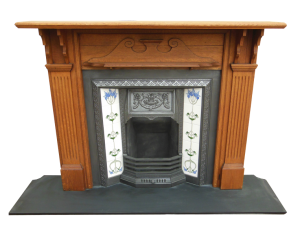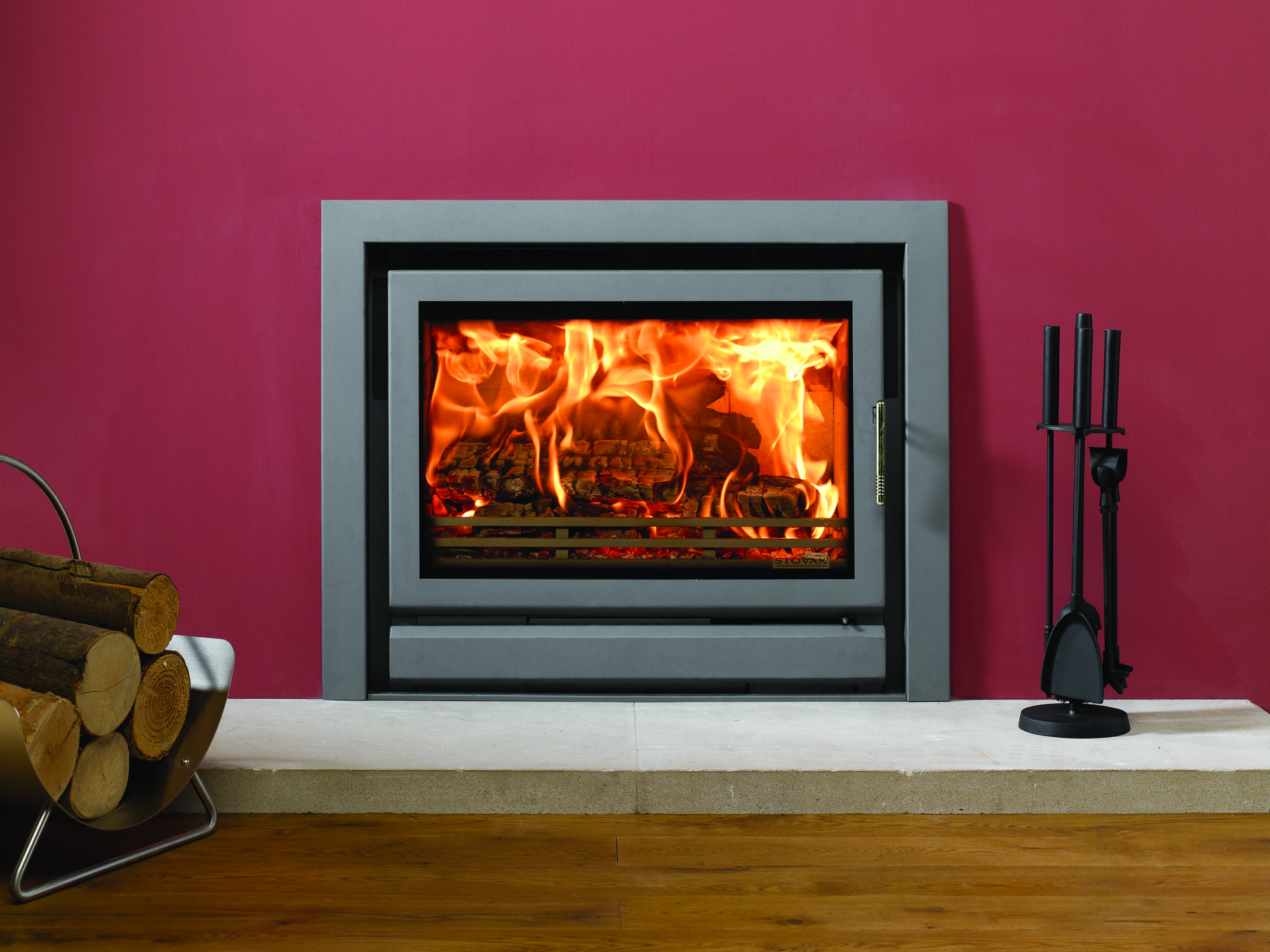Blog
Installing a Wood Burning Fireplace

Welcome to our guide on installing a Wood Burning Fireplace in your home. In this article we explain the benefits of a wood burning fireplace, and how best to go about getting one installed in your home.
Although it is rare these days to come across a home that doesn’t use central heating during the cold winter months, many people prefer the glow and ambience of a warm, crackling fire, especially for those larger downstairs rooms that become the focal point of the family home.
The problem is, however, that old fashioned masonry hearths are highly inefficient, allowing heat to escape through the chimney and requiring extensive amounts of care and maintenance every year – too much bother for so little a reward. If you are still intent on a having a fireplace installed, then a wood burning fireplace insert might be just the answer you are looking for.
These inserts are designed to look traditional and authentic, but in fact function through a two-pipe ventilation system whereby air required for the fire to burn properly is drawn from the cold outdoors rather than the warm confines of your chosen room. Inserts can also be bought at stock sizes or be custom made to fit your own hearth.
A professional fireplace installer will follow these steps when fitting a wood burning fireplace insert:
1) Firstly you will need to measure the length, height and width of the existing hearth, to make sure you purchase a firebox insert that will fit neatly into the available space and not jut out or look untidy or obtrusive.
2) Once you have bought your insert you can then check it’s the correct size by sliding it into hearth space, allowing for an additional one centimetre gap between the box and the hearth walls and making sure it doesn’t look too large or bulky from all corners of the living room.
3) Next, it’s time to install the block-off plate (if you have one). This is basically a large rectangle sheet of metal that is fixed on the underside of the hearth flue (using masonry screws and a power screwdriver) designed to provide proper ventilation and keep the chimney relatively clean.
4) Once this is securely fitted the new fireplace insert can be slid back into the hearth, where its own flue pipe should be easily connected into the opening at the centre of the block-off plate.
5) Finally the exterior panelling of the insert should be properly attached to the hearth using small metal screws or, in some cases, a lock-and-snap mechanism that is already a part of the unit.
Remember, before you fit your insert it is always a good idea to get your chimney vent professionally cleaned and lined beforehand – that way you avoid damage and any expensive repairs later on. If you are simply looking for a wood-burning fireplace insert then you will find that many of the available units come in strong, traditional steel and cast iron designs that, although quite dull and heavy-looking, provide a fireproof container that prevents any smoke from escaping into the chosen room yet gently emits as much heat as is possible. The cost of these designs will vary depending on the size of your hearth. If you lack the confidence to personally install the unit then you will also need to add on labour costs.

If you fancy a more traditional, elegant look for your new fireplace then you could always install a wooden surround on top of the fireplace insert as well. Such surrounds provide a rustic, natural look to this new living room centrepiece and come in a range of styles, colours and designs to suit a variety of different interiors.
The type of wood should be carefully considered. Oak is a solid, classic choice that provides a rather rustic and worn effect, while something like mahogany or cherry wood are a little more durable, plus seem more elegant and classy – although they aren’t always eco-friendly. Pine is cheap and quite neutral, able to blend with a variety of shades and colours, although it is prone to scratches and marks; while beech has a natural, organic look that adds an earthly touch to any room.
What about the style? A plain cubic design is a cheap and modest look to go for if you don’t fancy something on a grander scale; yet more ornate, elaborately carved designs, from the Victorian to Edwardian and Georgian styles, provide an antique look that would go well with the larger, grander country home.
If you are purchasing a fireplace surround then it will need to be fitted by a professional. Once your insert and surround have been carefully and securely installed, you and your family will be able to turn off the central heating and cosy up in front of a new, glowing wooden fireplace – without the old worry of major heat loss!

